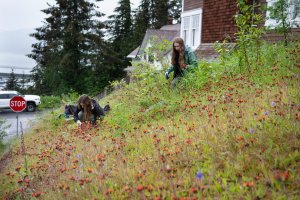Neighboring With Invasive Plants

2023 Interns Mia Siebenmorgen and Samaya Faber manually removing Orange hawkweed from a yard in Cordova.
Neighboring With Invasive Plants
By Bella Ranck and Floyd Witsoe
Alaska is facing a growing epidemic of invasive plant species. With widespread tourism, construction, and even moving water systems, invasive seeds are traveling far. Many of them are finding a comfortable home in our great state.
Identification is the first step in combating these plants. There are lots of helpful books, websites and apps available to aid a curious observer. The USDA Invasive Species list contains information on invasive flora and fauna in every state. The official NAISMA page is a website dedicated to connecting those desiring to fight invasive plants with the tools they’ll need.
Monitoring invasive plants is important in determining how quickly a species spreads and how the native inhabitants are being affected. Visiting a local invasive plant management organization or program office can help you familiarize yourself with troublesome species in your area. They can also provide you with ways to manage these weeds. Individual species often require different containment procedures due to varying seed characteristics and dispersal methods. These procedures may also vary with the stage of plant development.
Seeds are easily spread. PlayCleanGo is a useful website that provides information on seed management during favorite outdoor recreational activities.
The fight against infestation can also become a community effort. Your local watershed program may have events focusing on invasive weeds.
Proper identification and management of invasive plants can help prevent their spread and promote the regrowth of native plants. As individuals, it is important that we do our part to maintain the thriving ecosystem that native plants help create. And we can start by looking in our own backyards!


